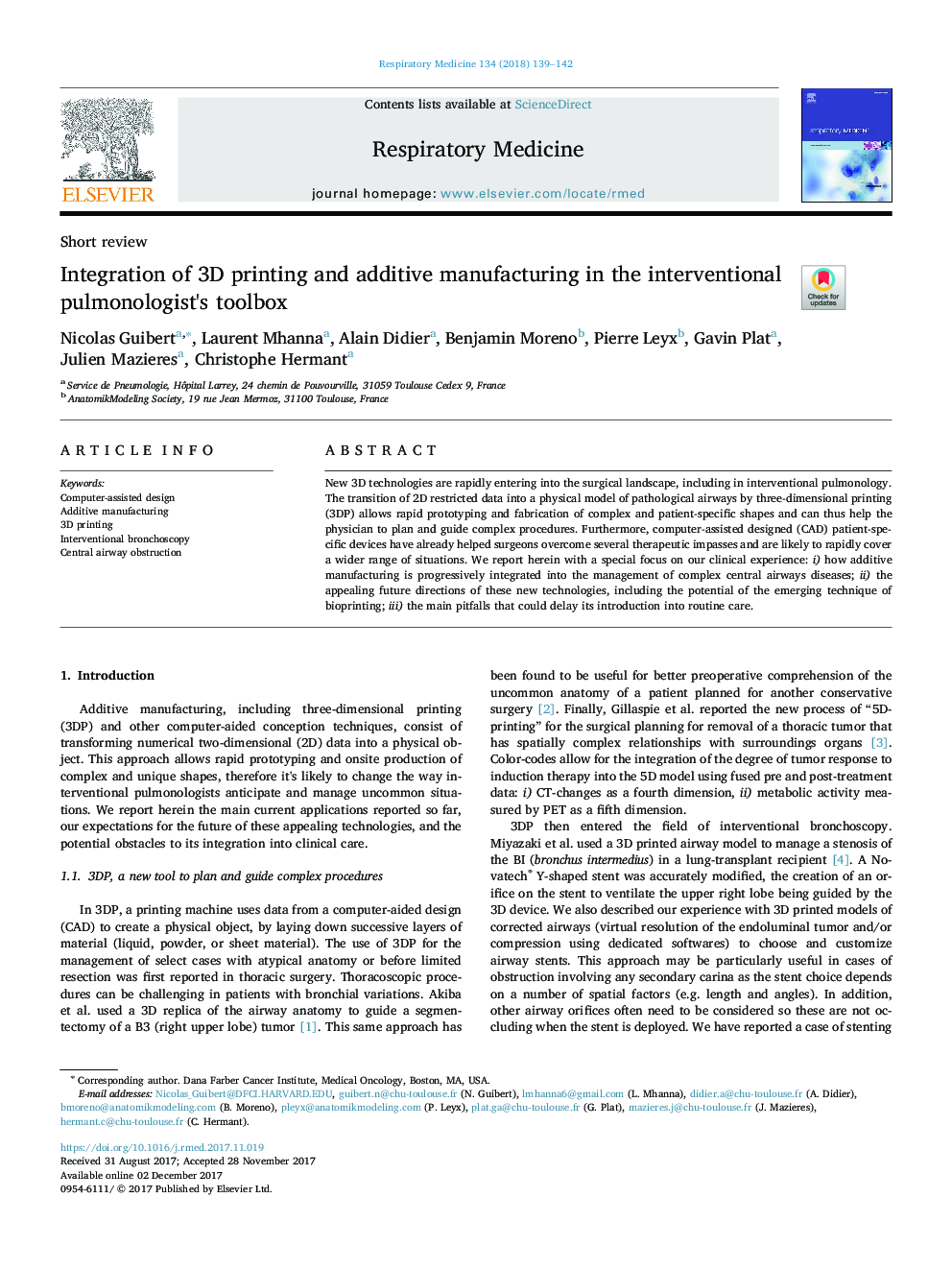| Article ID | Journal | Published Year | Pages | File Type |
|---|---|---|---|---|
| 8820033 | Respiratory Medicine | 2018 | 4 Pages |
Abstract
New 3D technologies are rapidly entering into the surgical landscape, including in interventional pulmonology. The transition of 2D restricted data into a physical model of pathological airways by three-dimensional printing (3DP) allows rapid prototyping and fabrication of complex and patient-specific shapes and can thus help the physician to plan and guide complex procedures. Furthermore, computer-assisted designed (CAD) patient-specific devices have already helped surgeons overcome several therapeutic impasses and are likely to rapidly cover a wider range of situations. We report herein with a special focus on our clinical experience: i) how additive manufacturing is progressively integrated into the management of complex central airways diseases; ii) the appealing future directions of these new technologies, including the potential of the emerging technique of bioprinting; iii) the main pitfalls that could delay its introduction into routine care.
Keywords
Related Topics
Health Sciences
Medicine and Dentistry
Pulmonary and Respiratory Medicine
Authors
Nicolas Guibert, Laurent Mhanna, Alain Didier, Benjamin Moreno, Pierre Leyx, Gavin Plat, Julien Mazieres, Christophe Hermant,
